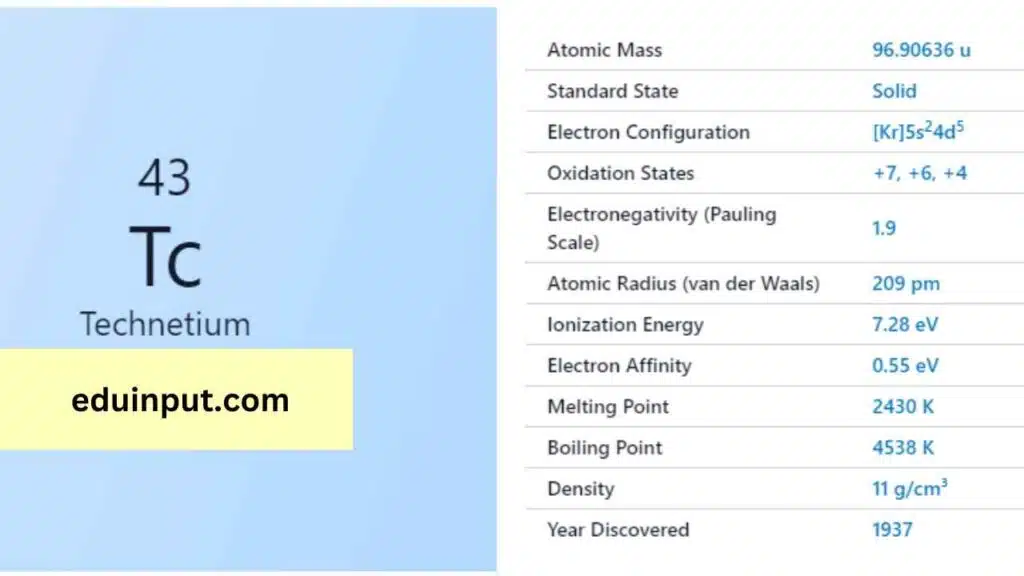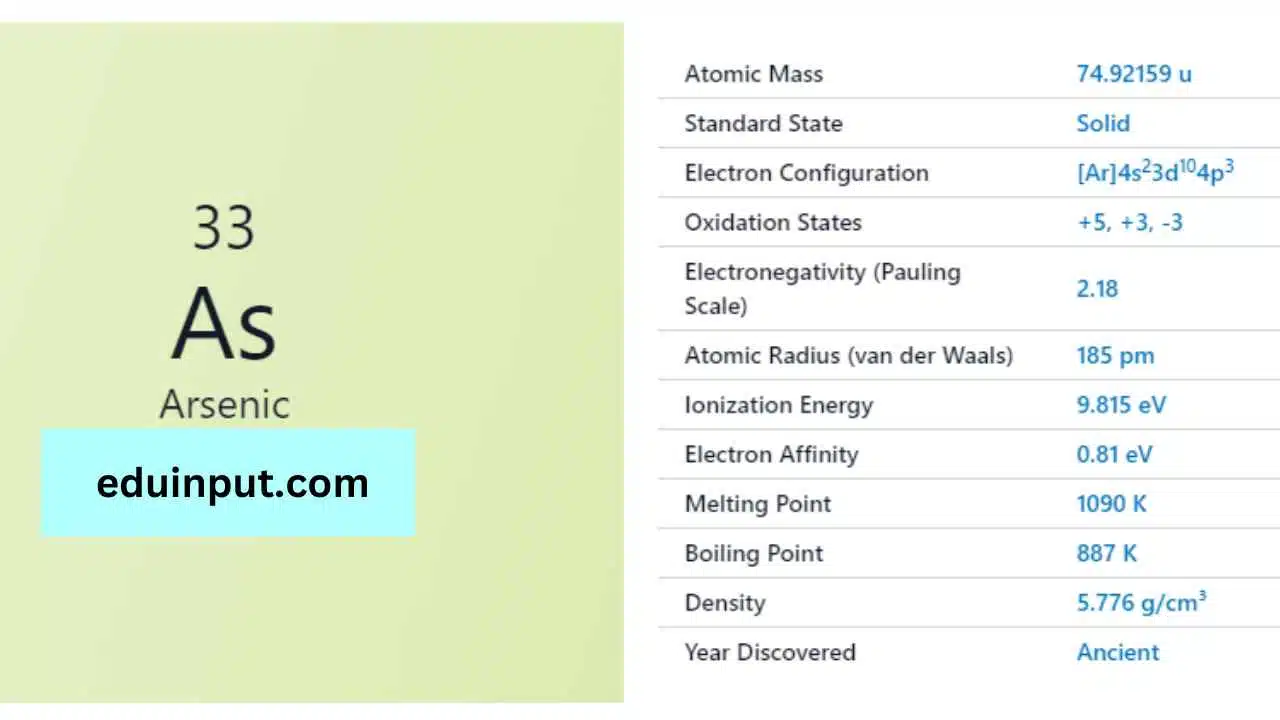Technetium-Discovery, Properties, And Applications
Technetium is a chemical element with the atomic number 43 and the symbol Tc. It is a radioactive element that is commonly used in medical imaging procedures. Technetium was the first synthetic element to be produced, and it has many unique properties that make it useful in various applications.

| Property | Value |
| Name | Technetium |
| Symbol | Tc |
| Atomic number | 43 |
| Relative atomic mass (Ar) | Period in the periodic table |
| Standard state | Solid at 298 K |
| Appearance | Silvery grey metallic |
| Classification | Metallic |
| The group in the periodic table | 7 |
| Group name | (none) |
| Period in periodic table | 5 |
| Block in periodic table | d |
| Shell structure | 2.8.18.14.1 |
| CAS Registry | 7440-26-8 |
Discovery
Technetium was first discovered in 1937 by the Italian physicist Emilio G. Segrè and his team at the University of California, Berkeley. They produced it by bombarding molybdenum with deuterons, which resulted in the creation of technetium-97.
Physical Properties
Technetium is a silvery-grey metal that has a melting point of 2,157°C and a boiling point of 4,265°C. It is a highly radioactive element that is unstable, and it has no stable isotopes. Technetium is paramagnetic, which means it is attracted to magnetic fields but is not magnetic itself.
Chemical Properties
Technetium is a transition metal that can form compounds with a wide range of oxidation states, from -1 to +7. It has many unique chemical properties that make it useful in various applications. For example, it is a strong gamma emitter, which makes it useful in medical imaging procedures. Technetium also has the ability to form complex compounds with other elements, which makes it useful in the production of radiopharmaceuticals.
Facts
- Technetium is the first synthetic element to be produced, and it has no stable isotopes.
- Technetium has many unique properties that make it useful in various applications, including medical imaging and the production of radiopharmaceuticals.
- Technetium is highly radioactive, and it has a half-life of only a few hours to a few million years, depending on the isotope.
Applications
Technetium has many applications in various fields, including medicine, chemistry, and nuclear engineering. Some of the most common applications of technetium include:
- Medical imaging: Technetium is used in medical imaging procedures, such as bone scans and myocardial perfusion imaging, where it helps to diagnose and monitor various medical conditions.
- Radiopharmaceuticals: Technetium is used in the production of radiopharmaceuticals, which are used in the diagnosis and treatment of various medical conditions.
- Nuclear engineering: Technetium is used in nuclear engineering applications, such as the production of radioactive isotopes and the study of nuclear reactions.
Technetium is a unique and highly radioactive element that has many applications in various fields. Its ability to form complex compounds and emit gamma radiation makes it useful in medical imaging and the production of radiopharmaceuticals. Technetium also has applications in nuclear engineering, where it is used in the production of radioactive isotopes and the study of nuclear reactions.







Leave a Reply